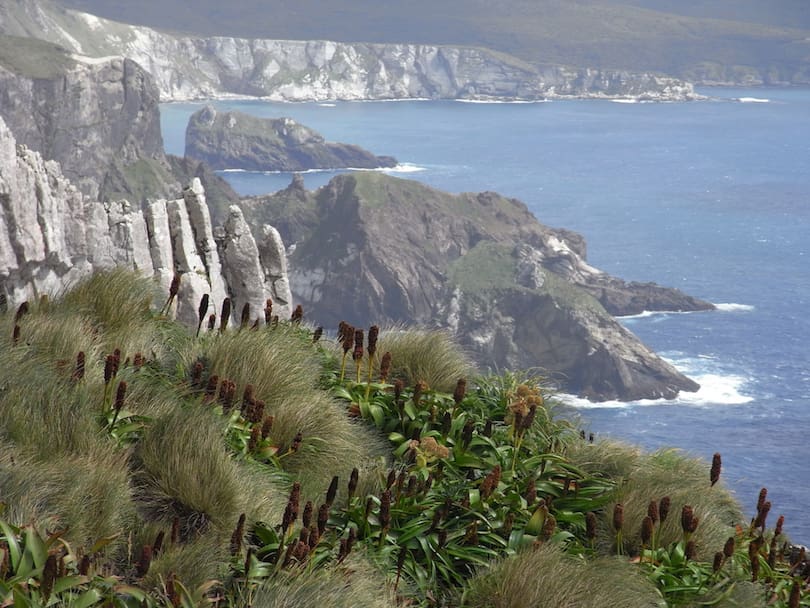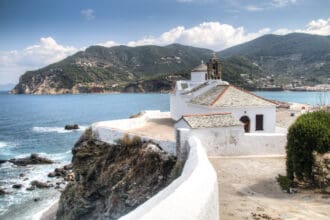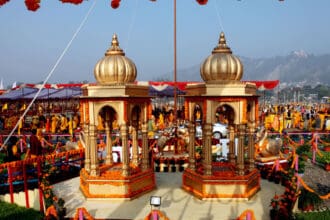As time passes, ancient civilizations leave their marks on the world in various ways. From abandoned temples to forgotten cities, the world is filled with awe-inspiring ruins that offer glimpses into the past. In this article, we will explore the 25 most amazing ancient ruins of the world, their history, and what makes them so fascinating.
Introduction
Ancient ruins are structures or sites that were once inhabited or used by people from the past. They can range from small villages to entire cities, and their ruins can provide insight into the lives and cultures of the people who built them. In this article, we will explore some of the most impressive and historically significant ancient ruins in the world.
1. The Pyramids of Giza, Egypt
The Pyramids of Giza are perhaps the most iconic ancient ruins in the world. Located just outside of Cairo, these pyramids were built over 4,500 years ago and were intended to serve as tombs for pharaohs. The largest of the three pyramids, the Great Pyramid of Giza, is the only surviving member of the Seven Wonders of the Ancient World.
2. Machu Picchu, Peru
Machu Picchu is a stunning Incan citadel located in the Andes Mountains of Peru. Built in the 15th century, the purpose of the site is still unknown, although it is believed to have served as a religious or ceremonial center. Machu Picchu was abandoned shortly after its construction and remained hidden from the outside world until it was rediscovered in 1911.
3. Petra, Jordan
Petra is a stunning city carved out of rock in southern Jordan. Built by the Nabataeans in the 4th century BC, Petra was an important trading center on the Silk Road. The city was rediscovered by the western world in 1812 and has since become a UNESCO World Heritage site.
4. Colosseum, Rome
The Colosseum is an ancient amphitheater located in the heart of Rome. Built over 2,000 years ago, the Colosseum was used for gladiatorial contests and other public spectacles. The amphitheater could hold up to 80,000 spectators and is considered one of the greatest engineering feats of ancient Rome.
5. Chichen Itza, Mexico
Chichen Itza is an ancient Mayan city located on the Yucatan Peninsula in Mexico. Built in the 6th century AD, the city was an important cultural and religious center for the Mayans. The most famous structure at Chichen Itza is the pyramid of Kukulcan, which is known for its precise astronomical alignment.
6. Acropolis, Greece
The Acropolis is a historic citadel located in Athens, Greece. Built in the 5th century BC, the Acropolis was home to several important temples and structures, including the Parthenon. Today, the site is a UNESCO World Heritage site and attracts millions of visitors each year.
7. Angkor Wat, Cambodia
Angkor Wat is a temple complex located in Siem Reap, Cambodia. Built in the early 12th century, the temple was originally dedicated to the Hindu god Vishnu before being converted to a Buddhist temple in the 14th century. The site is considered one of the largest religious monuments in the world.
8. Stonehenge, England
Stonehenge is a prehistoric monument located in Wiltshire, England. The site consists of several large stone circles and was built over 5,000 years ago. The purpose of Stonehenge is still unclear, but it is believed to have served as a ceremonial site or even an astronomical observatory.
9. Tikal, Guatemala
Tikal is an ancient Mayan city located in the rainforest of Guatemala. Built between the 6th century BC and the 10th century AD, Tikal was an important cultural and religious center for the Mayans. The site contains several pyramids, temples, and palaces, and is considered one of the most important archaeological sites in Central America.
10. Borobudur, Indonesia
Borobudur is a 9th-century Buddhist temple located in Central Java, Indonesia. The temple is built in the shape of a mandala and contains over 2,500 relief panels and 500 Buddha statues. Borobudur is considered one of the greatest Buddhist monuments in the world.
11. Ephesus, Turkey
Ephesus was an ancient Greek city located in western Turkey. The city was founded in the 10th century BC and was an important center of trade and commerce. Today, the ruins of Ephesus contain several impressive structures, including the Temple of Artemis, which is considered one of the Seven Wonders of the Ancient World.
12. Teotihuacan, Mexico
Teotihuacan is an ancient Mesoamerican city located in the Basin of Mexico. Built between the 1st and 7th centuries AD, Teotihuacan was one of the largest cities in the world at the time. The site contains several impressive structures, including the Pyramid of the Sun and the Pyramid of the Moon.
13. Bagan, Myanmar
Bagan is an ancient city located in central Myanmar. Built between the 9th and 13th centuries AD, Bagan contains over 2,200 temples and pagodas, making it one of the most impressive archaeological sites in Southeast Asia.
14. Great Zimbabwe, Zimbabwe
Great Zimbabwe is an ancient city located in southeastern Zimbabwe. Built between the 11th and 15th centuries AD, Great Zimbabwe was an important center of trade and commerce. The site contains several impressive structures, including the Great Enclosure, which is considered the largest ancient structure in sub-Saharan Africa.
15. Herculaneum, Italy
Herculaneum is an ancient Roman city located near Naples, Italy. The city was destroyed by the eruption of Mount Vesuvius in AD 79 and remained buried under volcanic ash until it was rediscovered in the 18th century. The ruins of Herculaneum contain several well-preserved structures, including houses, shops, and public buildings.
16. Ta Prohm, Cambodia
Ta Prohm is a temple located in Angkor, Cambodia. Built in the late 12th century, the temple was dedicated to the mother of King Jayavarman VII. The temple is known for its intricate carvings and the way in which the trees and other vegetation have grown around and through the ruins.
17. Palmyra, Syria
Palmyra is an ancient city located in central Syria. The city was an important center of trade and commerce and was known for its impressive architecture and art. Unfortunately, much of the city was destroyed by ISIS in 2015, but efforts are underway to restore and preserve what remains.
18. Chavin de Huantar, Peru
Chavin de Huantar is an ancient archaeological site located in the Andean highlands of Peru. The site was once a religious and political center of the Chavin culture, which flourished between 900 and 200 BCE. The most impressive feature of the site is the Temple of Chavin, a massive stone complex that includes underground galleries, courtyards, and a circular plaza. The temple is decorated with intricate carvings and sculptures, including the famous Lanzón, a large stone sculpture of a deity that is believed to have played a central role in Chavin religious rituals.
Machu Picchu, Peru
Machu Picchu is a 15th-century Incan citadel located in the Andes Mountains of Peru. The site was built as a royal estate for the Incan emperor Pachacuti and was abandoned after the Spanish conquest of Peru. The site remained hidden from the outside world until its rediscovery in 1911 by Hiram Bingham. Today, Machu Picchu is one of the most popular tourist destinations in South America and is considered one of the new Seven Wonders of the World.
Tulum, Mexico
Tulum is a Mayan archaeological site located on the Caribbean coast of Mexico. The site was built during the 13th century and served as a major port for the Mayan city of Coba. The most impressive structure at Tulum is the Castillo, a large stone castle that sits on a cliff overlooking the sea. The site is also known for its well-preserved frescoes and murals that depict Mayan gods and daily life.
Borobudur, Indonesia
Borobudur is a 9th-century Mahayana Buddhist temple located in central Java, Indonesia. The temple is the world’s largest Buddhist temple and is decorated with over 2,500 relief panels and 500 Buddha statues. The temple was abandoned in the 14th century and was rediscovered in the 19th century. Today, Borobudur is a UNESCO World Heritage site and is one of the most popular tourist destinations in Indonesia.
Ephesus, Turkey
Ephesus is an ancient Greek city located in present-day Turkey. The city was once a major center of trade and culture and was known for its impressive architecture, including the Temple of Artemis, one of the Seven Wonders of the Ancient World. The site is also home to the Library of Celsus, a well-preserved Roman library, and the Great Theatre, an ancient amphitheater that could seat up to 25,000 people.
Petra, Jordan
Petra is an ancient city located in the Jordanian desert. The city was built by the Nabataeans, an Arab tribe, and was an important center of trade and commerce. The most impressive feature of Petra is the Treasury, a massive stone structure that was carved out of the rock face. The site is also home to the Monastery, a large temple that is located high up in the mountains.
Teotihuacan, Mexico
Teotihuacan is an ancient Mesoamerican city located in the Basin of Mexico. The city was built between the 1st and 7th centuries and was one of the largest cities in the world at its peak. The most impressive features of the site are the Pyramid of the Sun and the Pyramid of the Moon, two massive stone pyramids that served as religious centers. The site is also home to the Temple of the Feathered Serpent, a well-preserved temple that is decorated with intricate carvings and sculptures.
Pompeii, Italy
Pompeii is an ancient Roman city located near Naples, Italy. The city was destroyed by the eruption of Mount Vesuvius in AD 79 and buried under layers of ash and pumice. It remained buried for almost 1700 years until it was rediscovered in 1748. Pompeii provides a unique glimpse into the life and culture of the ancient Roman Empire, as many of the city’s buildings and artifacts were remarkably well-preserved by the volcanic ash.
The ruins of Pompeii are vast and offer a fascinating insight into ancient Roman life. Visitors can walk along the city’s original streets and see the remains of houses, shops, temples, and public buildings. The city’s impressive amphitheater, which could seat up to 20,000 people, is also still intact. The city’s public baths, which included hot and cold pools, saunas, and gymnasiums, provide an interesting look into the bathing and grooming practices of the ancient Romans.
One of the most famous aspects of Pompeii is the plaster casts of the city’s inhabitants. These casts were made by pouring plaster into the cavities left in the ash by the decayed bodies of the city’s inhabitants. The casts provide a haunting glimpse into the last moments of the city’s residents and are a reminder of the devastation caused by the eruption of Mount Vesuvius.
The site is incredibly popular with tourists, receiving over 2.5 million visitors per year. It has also been designated a UNESCO World Heritage Site since 1997. Efforts are continually being made to preserve and protect the site for future generations to enjoy.
Some of the most impressive features of Pompeii include:
- The Forum: This was the city’s main public space and was the center of political and social life in Pompeii. It is surrounded by important buildings such as the Temple of Jupiter, the Basilica, and the Macellum (marketplace).
- The House of the Faun: This is one of the largest and most impressive private residences in Pompeii. It gets its name from the statue of a dancing faun that was found in the house.
- The Villa of the Mysteries: This is a well-preserved villa on the outskirts of Pompeii. It is famous for its frescoes that depict the initiation rites of the cult of Dionysus.
- The Amphitheater: This is one of the oldest surviving Roman amphitheaters in the world and could seat up to 20,000 people. It was used for gladiatorial contests and other public spectacles.
In conclusion, Pompeii is one of the most amazing ancient ruins in the world. It provides a unique glimpse into the life and culture of the ancient Roman Empire and is a testament to the destructive power of nature. Its well-preserved buildings and artifacts offer a fascinating insight into ancient Roman life and continue to attract millions of visitors every year.
FAQs:
- What is the most famous ancient ruin in the world? The most famous ancient ruin in the world is undoubtedly the Great Pyramid of Giza in Egypt.
- Why were many ancient ruins destroyed or abandoned? Many ancient ruins were destroyed or abandoned due to natural disasters, wars, invasions, or simply the passage of time.
- Are all ancient ruins open to the public? No, not all ancient ruins are open to the public. Some may be located in inaccessible areas, or may be deemed too dangerous for visitors to enter.
- How can I visit ancient ruins safely? To visit ancient ruins safely, it’s important to follow all posted signs and instructions, stay on designated paths, and avoid touching or climbing on any structures or artifacts.
- Are there any lesser-known ancient ruins worth visiting? Yes, there are many lesser-known ancient ruins that are worth visiting, such as the Tiwanaku ruins in Bolivia, the My Son sanctuary in Vietnam, and the Lepenski Vir site in Serbia.






